If you click on a link and make a purchase we may receive a small commission. Read our editorial policy.
The Boys was originally a DC Comics superteam: Inside the secret origin of the r-rated superheroes created to stop the Justice League
The secret history of The Boys by Garth Ennis and Darrick Robertson, before it became an Amazon Prime Video hit franchise - or even a comic book

To understand the comic book history of The Boys, you need to understand Image Comics. And Wildstorm Studios. And DC Comics. And Dynamite Entertainment. And the weird world of comics in the late ‘90s and early 2000s.
The pre-history of The Boys

To fully understand Image Comics, you need to understand that the traditional 'New York' publishing business, which comics fell under, wasn’t modernizing quickly enough to keep up with what the industry was becoming. The history of Image Comics is its own book or series of books. The quick version is, in 1992 Marvel's top artists Todd McFarlane, Jim Lee, Rob Liefeld, Erick Larsen, Jim Valentino, Marc Silvestri, and Whilce Portacio left their positions at the publisher (for the most part) to form their own comics company to give themselves more creative control and their share of the money their creations made.
Image took off like a house afire, with initial issues selling upwards of one million copies and going into multiple printings. Rather than just publishing their own titles, some like Liefeld, Silvestri, and Lee opted to establish their own studios, each reflecting their own style and filled with their own characters. Liefld set up shop with Extreme Studios, Silvestri with Top Cow, and Lee with Wildstorm Studios.
The ‘90s were a difficult time for comics. The decade began riding high on the late ‘80s glow from titles such as Batman: The Dark Knight Returns and Watchmen, along with the successful modernizations of characters and the juggernaut that was Marvel’s X-Men franchise. And with Image Comics’ launch, smaller publishers finally gained attention and market share. Comics seemed to be entering a new golden age.
Until they weren’t.
Despite the decade’s strong start, by 1993, sales were falling off across the board. There were many reasons and plenty of blame to go around the industry — speculators inflating sales, poor quality, supply of comics outstripping consumer demand, Marvel taking their distribution in-house, the 'darker' turn of stories, late shipping books, event-driven stories, the rise of video games — and many more. Nothing was going right. Every bubble that looked like it was going to grow forever burst.
This era reached a low point on December 27, 1996, when Marvel filed for Chapter 11 bankruptcy. It was time for everyone to get out of the rain or hunker down for truly uncertain times.
Image Comics' Wildstorm to DC's Wildstorm

Navigating the ‘90s as a publisher took a toll. Many companies went out of business, and many comic shops closed. For Jim Lee, founding Image partner and head of Wildstorm Studios, running the business was taking him away from what he wanted to do — create comics. He sold the company to DC Comics in 1998.
Wildstorm had been managing through the lean years, becoming the home to a diverse collection of titles, including many creator-owned books. Sales on books were good for the time, but nothing matched the million-plus early days of Image. In the late ‘90s, Wilstorm’s core line of superheroes had fresh life breathed into them by the likes of Alan Moore, Warren Ellis, Joe Casey, Bryan Hitch, Tom Raney, and others. The core titles: Wildcats, Stormwatch, and DV8 were by far more edgy than Wildstorm’s previous output, and they were attracting the attention of fans and critics alike.
Making Wildstorm work with DC was difficult from the start. Alan Moore, who had established his own line of 'America’s Best Comics' at Wildstorm, loathed (and to this day, loathes) DC. His remaining with Wildstorm required a creative and financial workaround, which happened, but was an omen of things to come.
DC Comics was headquartered in New York City and a part of its longtime owner Warner Bros. It was, for the most part, a staid and respected part of the publishing establishment, comics own 'gray lady.' Wilstorm was a six-year-old studio with an office two blocks from the beach in La Jolla, founded by a relative kid when he was 30. The cultures could not be more different. DC had plans and schedules and shareholders to please. Wildstorm was designed to move fast and break things.
Throughout the early '00s, there were skirmishes and full-on battles between DC and Wildstorm, dutifully and sometimes gleefully reported by the online comics press. The Authority by Mark Millar and Frank Quitely. The League of Extraordinary Gentlemen by Alan Moore and Kevin O'Neill. Planetary by Warren Ellis and John Cassaday. All acclaimed and successful titles came under the microscope from New York, with editorial changes demanded or entire storylines being changed to fit DC’s vision.
If DC didn't like Wildstorm, why did they buy it?

One of the main reasons DC bought Wildstorm was for Wildstorm FX, the studio’s in-house coloring department. Back in New York, DC was mostly coloring books the old-fashioned way, while Wildstorm — lighter, more nimble, and able to adapt to change quickly — used a new product called Photoshop.
A side note — In late 1994, Marvel Comics bought the small, but growing Malibu Comics, home of the 'Ultraverse' collection of superheroes. At the time, it was reported that Marvel picked up Malibu for its cutting-edge coloring studio. While coloring was part of the deal, its importance was overstated. Marvel bought Malibu to control market share.
DC Comics had been negotiating a deal to buy Malibu since earlier in the year, and Marvel swooped in and picked them up to keep the company (and its market share) away from DC. Through Marvel’s lens, DC market share + Malibu market share > Marvel market share, which would be bad. Though not as bad as what would come for Marvel Comics later in the ‘90s.
But modernizing coloring was a thing in comics in the mid '90s, and both DC and Marvel ended up spending some money to get the technology (and its users) into their hands. Announcements of “first digitally colored issue” were common for a short while as the new ways replaced the old ways.
Comics in the ‘90s was a strange, different world.
Enter The Boys creator Garth Ennis and Darrick Robertson

After starting writing comics when he was 19, Garth Ennis found his voice in the UK comics scene by writing what he knew. Born in Northern Ireland, Ennis’ first work showed his ambition, his unique worldview, and a razor-sharp sense of (often dark) humor. In 1991, with two years of experience under his belt, Ennis took over the writing of DC Comics’ Hellblazer series, which he wrote for three years.
The quality and popularity of Ennis’ writing landed him a gig on DC’s The Demon, where he and artist John McCrea introduced a superpowered contract killer named Tommy Monaghan. Tommy’s introduction proved popular enough to get him his own series, Hitman, which ran 60 issues from 1996 to 2001.
While Ennis never made a secret about his lack of reverence for superheroes, Hitman gave him a chance to showcase his feelings. DC heroes would make occasional guest appearances in Hitman, and the title would have to participate in company-wide crossover stories from time to time. Save for one appearance of Superman, who was treated with respect, Ennis’s portrayal of DC’s heroes showed them, at best, buffoons and, at worst, dangerous wild cannons. But they were still DC’s major heroes, and Hitman was a DC title, so things never got out of hand.
It was also during this time that Ennis (along with artist Steve Dillon) began Preacher under DC’s Vertigo imprint. A story about a supernaturally-powered preacher on the hunt to hold God accountable for his creation, the title found acclaim from fans and critics, as well as controversy for Ennis’ take on religion. For the entirety of its run from 1995 - 2000, Preacher (and its spinoffs) was raw, engrossing, violent, and at times, heartbreakingly sweet.
But Ennis wasn’t exclusively a DC writer — he was writing The Darkness for Top Cow Studios, illustrated by Image Founder and studio chief Marc Silvestri, and Marvel signed him up for a variety of projects as well. Ennis began his work at Marvel with The Punisher, a character Ennis basically made his for the better part of a decade from 2000 - 2008 while giving his take on other Marvel characters with various well-received projects.
In 2001, Ennis teamed up with Darick Robertson on Fury, a six-issue miniseries starring Nick Fury, published through Marvel’s MAX imprint. The MAX imprint was designed to give creators leeway for more explicit content, from violence to sex, to more mature themes. It was a perfect match - creators, character, and imprint.
But while the collaborative relationship between the two would go on to great things from the start, the team of Ennis and Robertson courted controversy from the start as well.
Marvel was pushing all of its properties toward movies in the late ‘90s and early '00s — courting directors and powerful movie stars who could shepherd projects to studios. While Ennis and Robertson’s take on Fury was greeted with an overall positive reception, there was one particular fan of the character who didn’t like it.
George Clooney was in talks to play Nick Fury in a solo film. A script had been written, and Clooney reportedly liked it. But then, in doing research for the role, he found Ennis and Robertson’s Fury. Reportedly, the scene where Fury strangled an enemy to death with his intestines was too over-the-top for Clooney. He was out.
The loss of Clooney was a bit of a black eye for Marvel and instituted some guardrails on what was being published, but the bond between Ennis and Robertson was a lock. The two would go on to launch the Punisher into the MAX imprint with 2003’s The Punisher: Born, work again on a run of the 'regular' Marvel Universe Punisher, and team again on 2006’s Fury: Peacemaker miniseries (with toned-down violence compared to their initial outing with the character).
For his part, Robertson started in comics young, creating, writing, and drawing his own comics as a teen and getting his first professional gig at 21 with Justice League Quarterly #4 in 1991. His talent was recognized early, and he found work at both DC and Marvel through the ‘90s, from more Justice League to a run on Marvel’s New Warriors and Spider-Man special projects. But pre-The Boys, Robertson is best known for his 'other' collaboration with a UK writer: Transmetropolitan, which he co-created with Warren Ellis.
Transmetropolitan launched in 1997 as part of DC’s now-dead Helix imprint of science fiction comics. The series won acclaim and sales, Helix died, and Transmetropolitan moved to DC’s Vertigo imprint, which came out monthly through 2002 for 60 issues, alongside Preacher.
From the start, Robertson’s look and designs for the title and the lead character, future 'gonzo journalist' Spider Jerusalem, gave him room to grow and develop as an artist. His talent in demand, Robertson moved to Marvel under an exclusive contract with the end of Transmetropolitan. Robertson’s Marvel work included a 14-issue run on Wolverine and a 12-issue run on Nightcrawler — and, of course, his work with Ennis.
Ennis and Robertson had become fast friends while working together on Fury and Punisher: Born, and, as good friends in comics do, were constantly batting around ideas. One of those ideas stuck in the brains of both creators, and in 2006, frustrated by the lack of opportunities moving ahead at Marvel, Robertson resigned from his exclusive contract and struck out with Ennis to pitch The Boys, an idea they’d been playing with since 2002.
The birth and quick death of The Boys

Originally, The Boys was going to take place in the main DC Universe, pitting Butcher, Mother’s Milk, the Female, Hughie, and Frenchie working to keep DC’s main heroes in check: Superman, Batman, Wonder Woman, Aquaman, and the Flash. Along with DC editorial, Ennis and Robertson quickly realized they’d never be able to do what they wanted to do with the series in the DC Universe.
Enter DC’s “west coast office,” Wildstorm. A mature readers title by two creators who were very familiar with controversy. What could go wrong?
By the time The Boys was being considered at Wildstorm, some of the dust from earlier issues in terms of content had settled. But there was still tension regarding what was and wasn’t allowed in Wildstorm titles. With the pick-up by Wildstorm, Robertson was offered an exclusive contract with DC/Wildstorm, which allowed him room to work on The Boys as well as other projects. Also — The Boys would be set in their own self-contained universe and creator-owned. There would be no glorified beatings on Wildstorm, DC, or other known characters. Like Preacher, Hitman (and Transmetropolitan), a 60-issue run was planned.
Ennis and Robertson went to work, and the comics media took it from there. Announced in March of 2006 and hyped by DC with previews, wallpapers, and promo materials, both Ennis and Robertson took to the interview circuit, gleefully explaining the concept — one that Ennis famously claimed would “out Preacher-Preacher” when it hit comic shops later that year.
From Wildstorm.
Originally set to launch in October 2006, DC upped The Boys on the release schedule, double-shipping #1 and #2 in August, followed by #3 and #4 in October, #5 in November, and #6 in December. The six issues had (for the time) quite respectable sales numbers. It was a hit, and its audience realized that content-wise, Ennis and Robertson’s earlier hype wasn’t hyperbole. This was everything they had promised. It was on its way to “out-Preacher Preacher.”
But something was up behind the scenes. As Robertson explains in Wild Times: An Oral History of Wildstorm Studios, he started getting a lot of requests for changes starting with issue #3. The series had been run according to established (and re-established) DC-Wildstorm protocols, so all the eyes that needed to be on the pages were on the pages. Robertson penciled through issue #10 on the series, just so everyone who needed to see what was included could see it.
And then, on January 24, 2007, word spread that The Boys had been canceled. Comics shipping being what it is, issues #7-#10, as well as the trade collection of the first six issues, were solicited but would not ship, while orders for #7, already placed by comics retailers, were canceled.
To date, no one has spoken publicly about the specific reasons why The Boys was canceled at Wildstorm, although it’s fair to note that the book was finding its footing, and it was becoming quite clear where things were headed in issues to come.

While the first six issues featured none-too-flattering analogs of DC characters along with drug use, all kinds of moral depravity, gore, and self-harm, issue #7 may have been a bridge too far. The issue featured the introduction of a Batmian-ish Tek Knight, a billionaire with no powers who relies on technology to fight crime while aided by a teen sidekick and butler. And he also has a psychological condition that causes him to have spontaneous sex with all things - living and inanimate.
This was just a handful of years after New York’s run-ins with Wildstorm over content, and even though the book was reportedly following proper channels for approvals, something about it - Tek Knight or its overall tone, was just too much and the plug was unceremoniously pulled less than a year after the title was announced.
The rebirth of the Boys
But The Boys was creator-owned, not a corporate property. If one publisher didn’t want to publish it, perhaps another would.
Robertson has famously related the story of hearing about the cancelation, feeling utterly gutted, and taking his family on a weekend trip to Disneyland. After not looking at his phone all weekend, he checked it on the way home - it was exploding with offers from other publishers (17 in total) to publish The Boys.
The comic book industry, it seemed, didn’t want The Boys to slide quietly into that good night. According to Robertson, DC was quick to revert the publishing rights of The Boys back to its creators, which would allow them to shop it around. Robertson would continue working under his DC exclusive contract, while any work on The Boys would be allowed under a 'carve-out' in his contract.
In the end, there wasn’t even time for The Boys’ body to cool. On February 7, 2007, it was announced that The Boys would return to print shortly under the Dynamite Entertainment banner.
At the time, landing The Boys was another step in Dynamite’s climb in the marketplace. Having started in 2004 by publisher Nick Barrucci, Dynamite was the little publisher that could. The company attracted attention and acclaim for returning Red Sonja to comics after last being published by Marvel in 1995. From there, Dynamite would acquire the rights to comic properties that had low-key cool and cult followings, such as Army of Darkness and Battlestar Galactica. Barrucci was relentless in his marketing and would make sure all of his ongoing and upcoming titles received their share of the online comics press. Dynamite was on the radar of comics fans, but becoming the home for The Boys brought Dynamite a new coolness.
Dynamite published The Boys #7 in July 2007, and the series kept coming out like clockwork. Ennis and Robertson were given as much freedom as they wanted to tell the stories they wanted to tell.
To be fair, The Boys at Dynamite didn’t rocket up the charts or break sales records. It continued to do what it had been doing at Wildstorm in terms of sales — but it was coming out regularly, and the relentless marketing energy that was applied to Dyanmite’s other books was now being heaped on The Boys as well.
The title was also folded into Dynamite’s healthy collection side of publishing, with trade paperback collections of the series’ storylines coming out shortly after the final chapter. A strong and steady trade library was key to The Boys’ success as well. Ennis's work (read Preacher, The Punisher, Hellblazer, etc.) sold very well in collections.

Robertson left the monthly series with issue #43, the final installment of 'The Innocents' storyline, in 2010. He returned two more times, with 2011’s miniseries Butcher, Baker, Candlestick Maker, and issue #72, 'You Found Me,' in 2012.
For his part, Ennis remained with the title and spin-offs as its sole writer throughout all its stories. He also made Dynamite a home for reprints of earlier work and new material — though nothing as ambitious as The Boys or his other long-form comics.
Originally ballparked for a 70-issue run, The Boys wrapped up after 72 issues and three six-issue miniseries that weren’t initially part of the plan during the title’s short tenure at Wildstorm. Since the series' completion, Dynamite has collected the run into 13 trade collections and six 'definitive' editions.
The Boys landed at Dynamite with the attention of Hollywood, and that only grew as the series continued its run. Beginning in 2008 with an option from Columbia, The Boys was passed from studio to studio, creator to creator, until 2017, when it was picked up by Amazon, debuting on July 26, 2019. A little shy of seven years after issue #72 was on the stands and almost thirteen years after issue #1 hit.
What a long, crazy trip it has been.
Get deeper into it with our guide to how to watch the Boys.
Follow Popverse for upcoming event coverage and news
Find out how we conduct our review by reading our review policy
Let Popverse be your tour guide through the wilderness of pop culture
Sign in and let us help you find your new favorite thing.




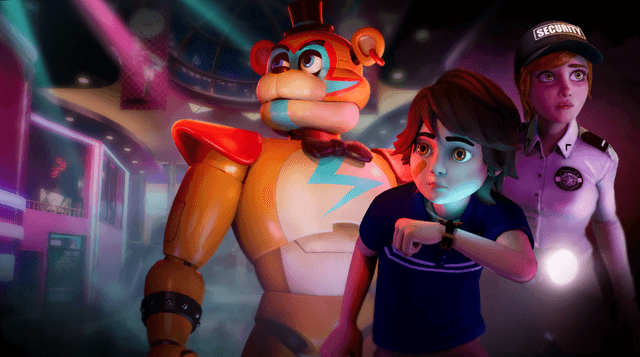
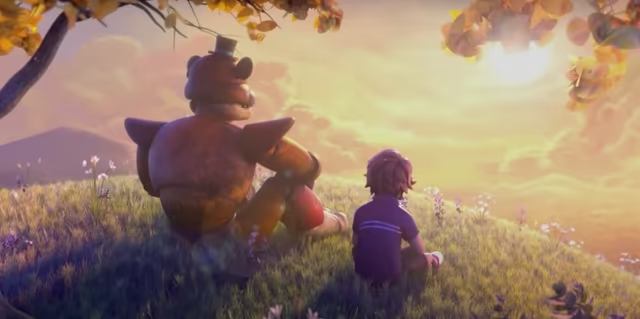
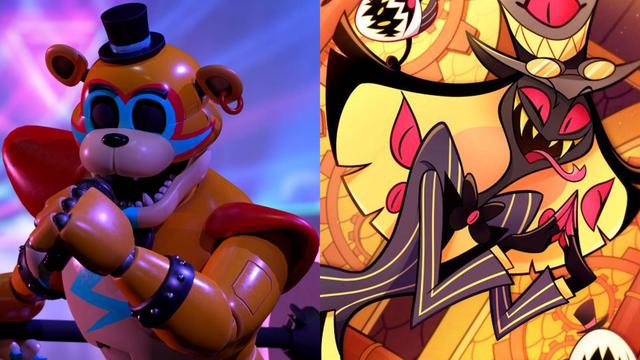

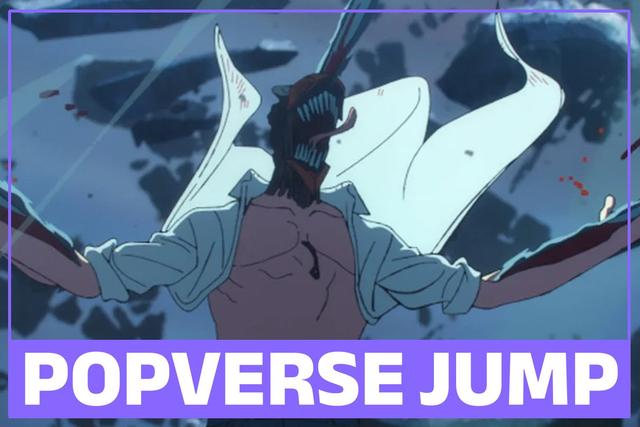
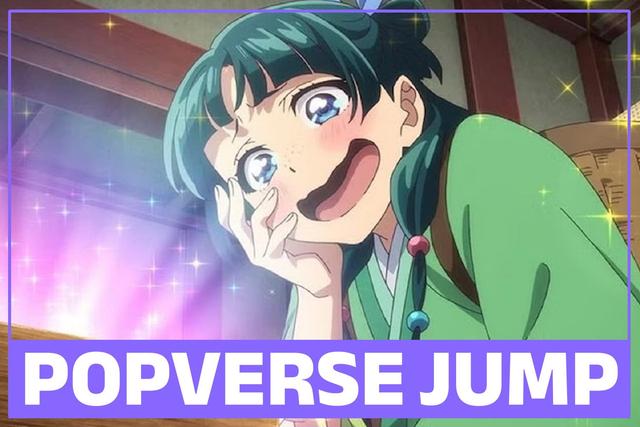






Comments
Want to join the discussion? Please activate your account first.
Visit Reedpop ID if you need to resend the confirmation email.